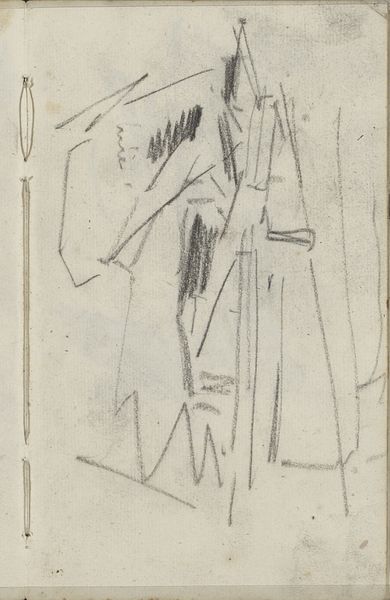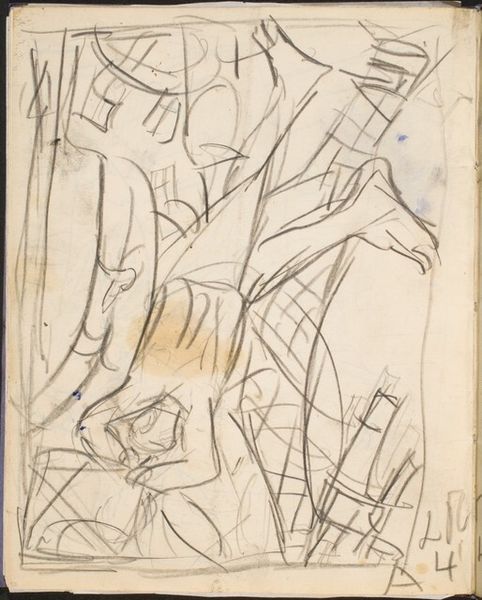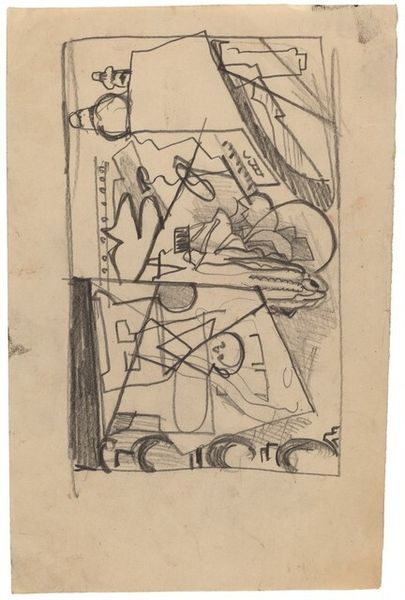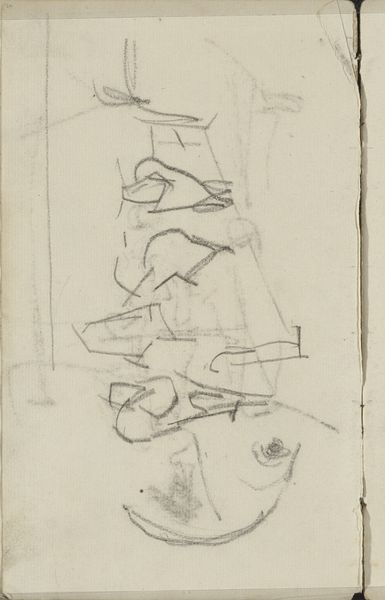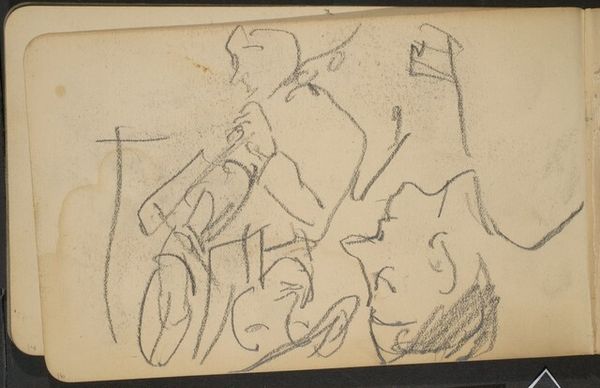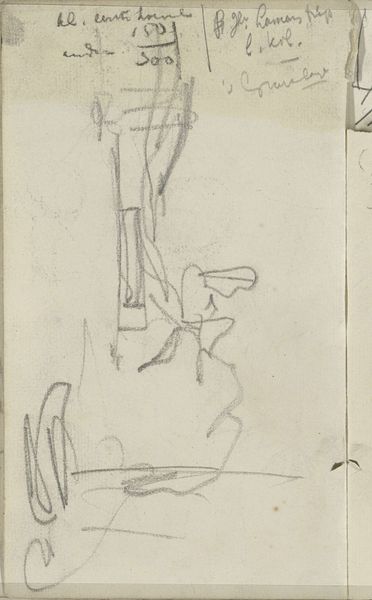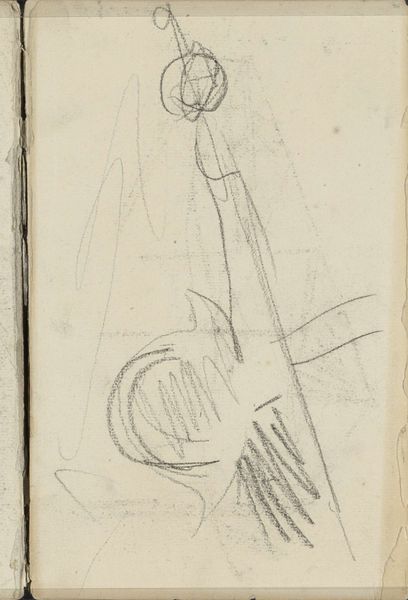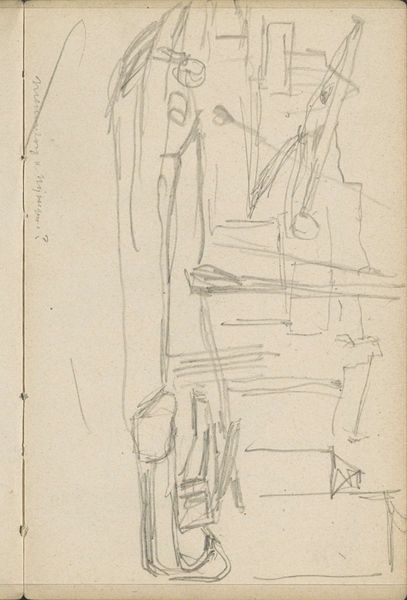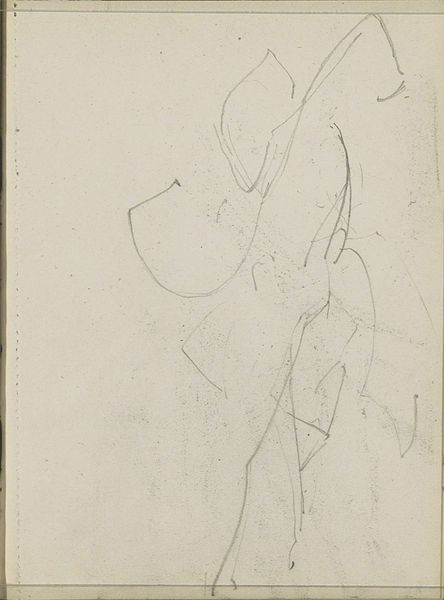![Tanzende Paare (A Dance) [p. 98] by Max Beckmann](/_next/image?url=https%3A%2F%2Fd2w8kbdekdi1gv.cloudfront.net%2FeyJidWNrZXQiOiAiYXJ0ZXJhLWltYWdlcy1idWNrZXQiLCAia2V5IjogImFydHdvcmtzLzc2MjgyYjg4LTg2ZGItNGY4Yy1iNDgyLTNlYTQxNzdhM2RlMy83NjI4MmI4OC04NmRiLTRmOGMtYjQ4Mi0zZWE0MTc3YTNkZTNfZnVsbC5qcGciLCAiZWRpdHMiOiB7InJlc2l6ZSI6IHsid2lkdGgiOiAxOTIwLCAiaGVpZ2h0IjogMTkyMCwgImZpdCI6ICJpbnNpZGUifX19&w=828&q=75)
drawing, pencil
#
drawing
#
ink drawing
#
figuration
#
pencil
#
expressionism
Dimensions: page size: 17 x 11.8 cm (6 11/16 x 4 5/8 in.)
Copyright: National Gallery of Art: CC0 1.0
Editor: This is "Tanzende Paare (A Dance)", from 1927, by Max Beckmann. It seems to be a drawing, maybe pencil and ink, of dancing couples. The lines are really gestural and energetic, but the people also seem kind of trapped within them. What's your read on it? Curator: Well, it’s the 'trapped' sensation I find most telling. Beckmann, a German artist working in the Weimar Republic, experienced the societal fractures after WWI firsthand. What impact do you think industrialization and the assembly line had on artistic production during this time? Editor: I imagine it changed people's perspective a lot on the value of labor. If one person isn't making an entire product, does that devalue craft and individual skill? Curator: Exactly. And Beckmann is directly engaging with this question through his deliberate, almost frantic mark-making. Note how the sketch quality doesn’t conceal its process, foregrounding labor as part of the artwork’s meaning. Editor: So the roughness, the seeming incompleteness, that’s intentional? It shows the *making* of the art as a kind of labor? Curator: Precisely! It resists the clean lines and finished quality often associated with "high art." Instead, it suggests an assembly line of gestures, mimicking the societal mechanization of labor at the time. Consider also the consumer’s role: How does the sketch's availability – it being a readily reproducible work on paper – factor into its commentary on mass culture? Editor: That's fascinating, it becomes accessible and almost mass produced... it’s not a unique, untouchable object, right? Curator: Indeed. By cheapening it, art is commenting on production and value of artwork in a rapidly changing era. The art highlights that transformation is never easy to accept as labor’s worth changes Editor: I never thought of looking at it that way before, as commentary on mass consumption, production, and also the societal unrest it represents. Curator: Absolutely! There's much to discover when we ground our analysis in the work’s materiality and production conditions.
Comments
No comments
Be the first to comment and join the conversation on the ultimate creative platform.
